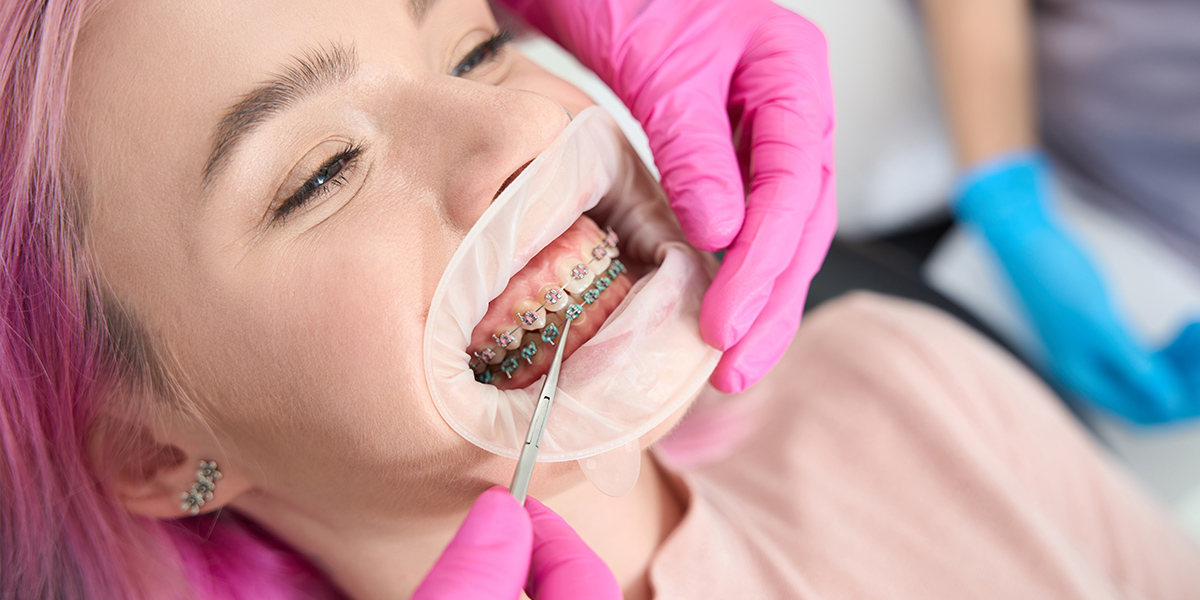Braces for kids can be a fun, magical journey.
Braces are a great way to improve your child’s smile. But as a parent, we know you likely have a few questions about braces for kids. In this article we’ll provide an overview of treatment and what you should know when setting up their initial consultation and before they begin treatment!
Braces are a much more common option today than 30 years ago.


Does my child need braces?
These are the most common dental issues we see:
- Early Loss of Baby Teeth
- Improper Bite and Functional Chewing Issues
- Heavy Mouth Breathing
- Current or Previous Thumb-sucking
- Overcrowded Teeth
- Jaws That Shift, Protrude, or Recede
- Teeth That Do Not Meet Normally
- Disproportionate Jaw
What’s the right age for braces?
The American Association of Orthodontists recommend that children have their first orthodontic check-up no later than age 7. Some kids come when they’re 6, some kids when they’re 10, and some don’t come well into their teenage years or early adulthood.
During your child’s first exam, our orthodontists go through a comprehensive exam of their teeth and jaw. We will also ask your child questions concerning their bite, their ability to chew and swallow, as well as any additional concerns they have at the time.
We’ll follow up that initial discussion with x-rays of the mouth and teeth to observe tooth positioning and identify problem areas, if present, that orthodontics can correct.

First visit, no need for anxiety
What happens during the first orthodontic visit?
During your child’s first exam, our orthodontists go through a comprehensive exam of their teeth and jaw. We will also ask your child questions concerning their bite, their ability to chew and swallow, as well as any additional concerns they have at the time.
We’ll follow up that initial discussion with x-rays of the mouth and teeth to observe tooth positioning and identify problem areas, if present, that orthodontics can correct.
Schedule An AppointmentWhat options for braces are there?
Traditional Metal Braces
The most common option. The option uses steel ties and brackets to reposition teeth. Kids love to choose colored bands to personalize their braces.
Invisalign
Some kids are candidates from Invisalign Teen which gives them the ability to wear clear removable aligners, to discreetly shift their smile.

A big consideration is cost
How much do braces cost?
Many factors can influence the cost of braces. We cover these factors you’ll want to consider below. All of our treatment plans cover the cost of monthly appointments, continued care, and adjustments.
The only aspect of care we can’t plan for is damage. If your child damages their braces from improper care, you may need to pay additional fees to repair their braces.
In the end, it’s not about cost. It’s about getting the right treatment for your child when they need it – or if they even need braces. Our consultation is free, we have no-interest financing available, and we love helping kids feel more confident with their appearance.
Most dental insurance plans consider braces to be a cosmetic procedure. For this reason, it can be difficult to find a carrier that covers the cost of braces, regardless of age. If you do get coverage for orthodontia, most carrier limit the coverage to traditional metal braces.
SmileLife Orthodontics realizes this and has developed an in-house financial plan where we can help 100% of our patients get the care they need and deserve.
Another reason to consider SmileLife Orthodonitcs is our experience. Not every orthodontist has experience with each kind of braces and, depending on your child’s alignment needs, the types available to you could be limiting – and additional costs.
Our orthodontists are leaders in orthodontics and can help with all types of braces to maximize cost effectiveness.
- METAL BRACES
- INVISALIGN
Most braces are worn for 12-30 months, but the length of time your child will need to wear braces depends on how severe the misalignment of their teeth is, and what type of braces are used.
Lastly, our most frequently asked questions.
The American Academy of Orthodontists recommends children see an orthodontist for the first time around age seven for an evaluation to determine whether braces are needed. While there is no age when a child “should” get braces, people who get braces as children rather than waiting until adulthood get better results in less time.
We’ve developed a glossary of terms to help parents and children understand their treatment better.
Braces can cost anywhere from $4,000 to $7,000 depending on the type of braces used and the length of treatment needed, among other factors.
Braces do not hurt. Some people feel pressure, but the procedure is not painful.
Usually, braces are worn for 18 to 24 months. Sometimes, braces need to be worn longer. Occasionally, braces are needed for shorter periods of time. Talk with your orthodontist about how long your child needs to wear braces.
Many dental insurance plans partially cover braces for children under 18.
The easiest foods for your child to eat after having braces installed for the first time are things like pudding, yogurt, bread (without seeds), pasta, soft vegetables, and soup or broth.
Yes, braces can change your child’s face. The changes that braces make are good changes! Because braces fix alignment issues, the effect is a more symmetrical, natural appearance.

